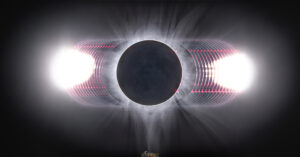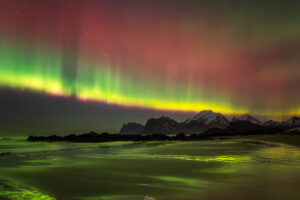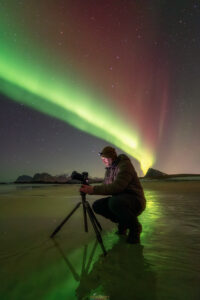June’s sky gives us a really beautiful show. We will be able to observe more interesting events in the night, evening, and also morning sky. This special is just for Northern hemisphere citizens. Enjoy!
Silver clouds will lit the sky during twilight
Exactly. The noctilucent clouds (NLC) season is in the beginning! Especially from Northern countries (approximately 45-60 degrees North). The first observations came from Northern countries yet. From central Europe, this fabulous clouds will appear in the evening and the morning sky. When Sun is just 6 to 16 degrees under the horizon, the NLC begins to shine. From nautical to astronomical twilight. The noctilucent clouds occur in the mesosphere in altitude about 85km above the ground, while the ordinary clouds occur in altitude just up to 10 km. It’s actually frozen ice particles with dust lit by the Sun. It’s forming due to human industrial activities, and also due to the dust from the comets (meteor showers) and cosmic junk. (Photo Lubomir Lenko)
 Mercury’s greatest evening elongation and Venus at the opposite side of the Sun.
Mercury’s greatest evening elongation and Venus at the opposite side of the Sun.
On the 3th-4th of June, Mercury will be actually in the greatest elongation. It will be farthest from the Sun and also at the highest point in the sky. We can observe Mercury on the West during dusk. On the opposite side – Venus is migrating from the evening “star” to the morning “star”. In the second part of June, Venus will rise on the East in the morning, just before the Sunrise.
Penumbral Moon eclipse
Well, it really won’t a magnificent show, but still a photogenic moment. From central Europe, penumbral Moon eclipse will just on the edge of visibility with the naked eye. Moon will be at the full moon phase and the deepest phase of that eclipse will occur just above half-hour from its rise.
 Annular Solar Eclipse
Annular Solar Eclipse
A really great show is coming, but, unfortunately just from the thin path of totality going through Africa, Arabia, Pakistan, India, and China. It’s one of the deepest annular solar eclipses this century. The Moon will cover the 99.4% surface of the Sun. People living in mentioned countries will observe just a thin ring of the Sun. (Photo NASA)
Milky way core visibility
June is a good month to observe Milky way core, especially from the southern part of Europe. From the second half of June, the Moon won’t be shine among nights. Unfortunately, in Northern Europe and also some countries in Central Europe, the astronomical nights won’t occur. In some regions, Sun won’t be more than 18 degrees below the horizon and it is not considered as an astronomical night… And as much northern we go, nights are more and more lit by the sunlight. But from central Europe, there is still the opportunity to observe it. And thanks to the core’s high position in the night sky, we can have such a good view! If You’re more South, You can enjoy a Milky Way for a longer time
Summer solstice and nice conjunctions
 Summer solstice
Summer solstice
– 20th of June 2020.
Longest daytime, shortest nighttime this Year for Northerners. After the summer solstice, days will be shorter and nights longer again.
Interesting June’s conjunctions
Sometimes, I called it rendezvous, but it’s not rendezvous as well. I chose the best conjunctions in June we will able to see. On the night June 9 – the conjunction of the Moon and two gas giants – Jupiter and Saturn. 13th of June at night- the conjunction of the Moon and red planet Mars. And at last, the most beautiful conjunction for me, the waning crescent Moon and the morning “star” Venus, just before the Sunrise.
I wish You a clear sky for all! 🙂












